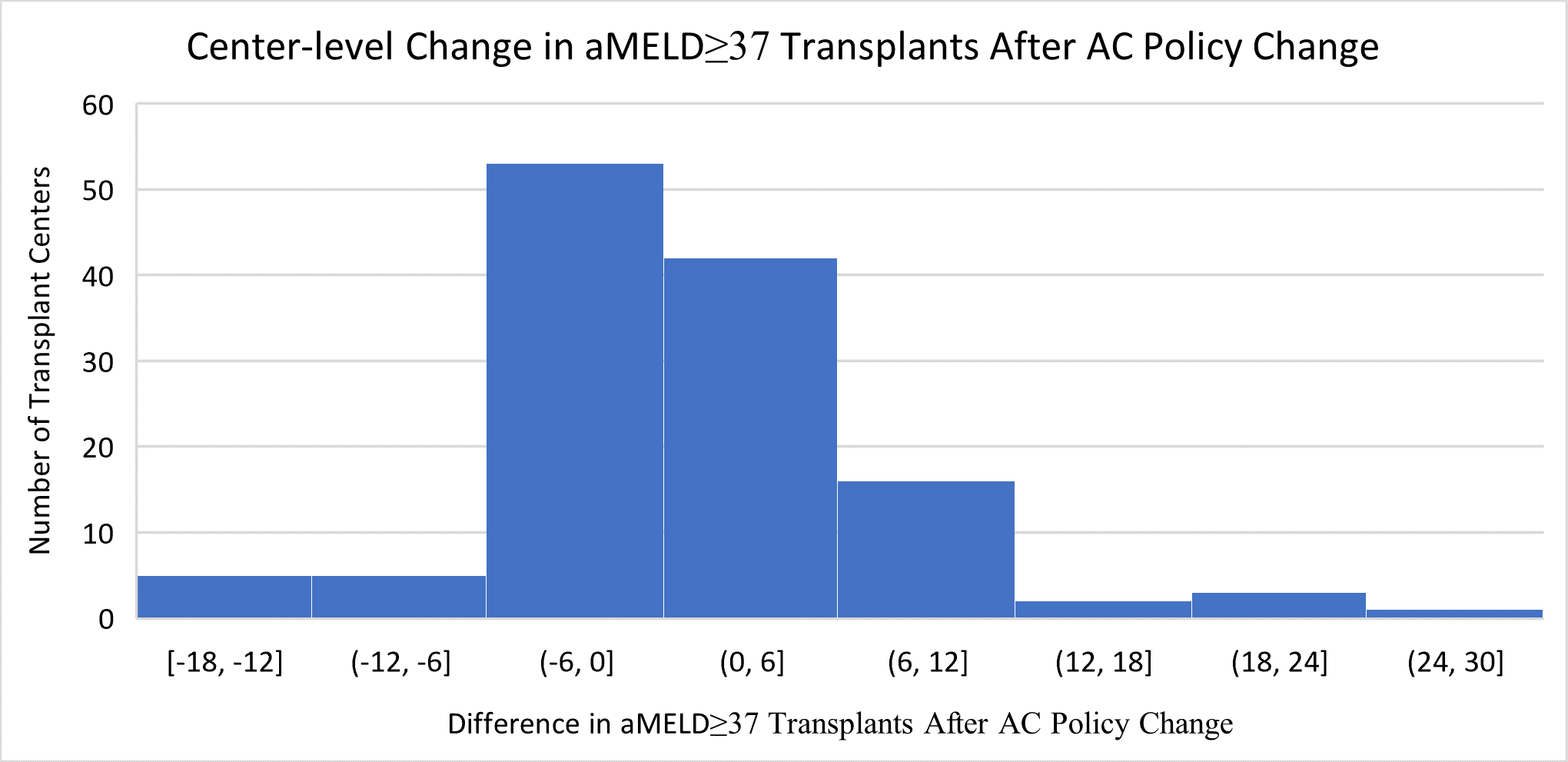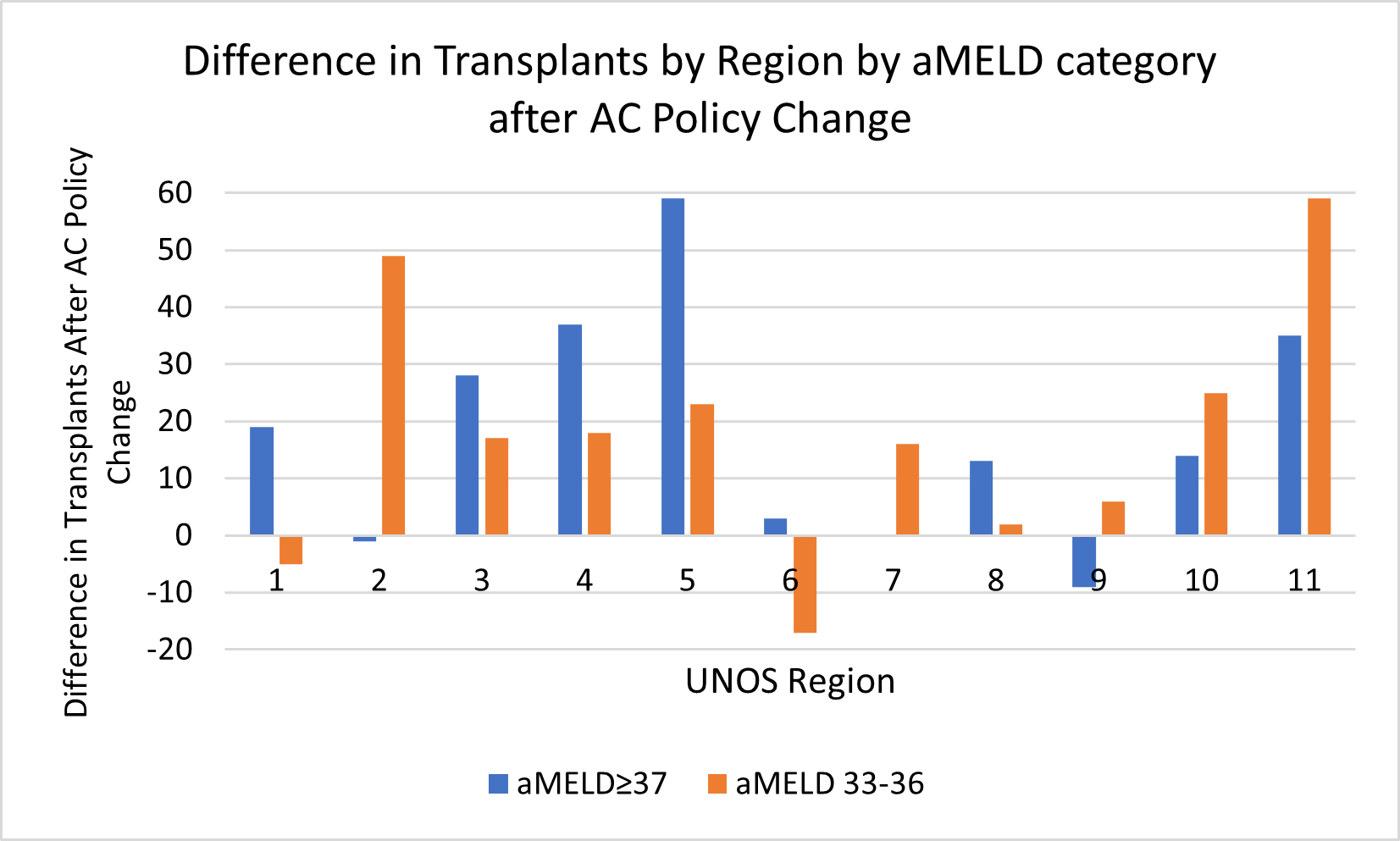Center-Level Variation in Transplantation Practice Following Acuity Circles Policy Change
1University of Miami Miller School of Medicine, Miami, FL, 2Department of Gastroenterology, University of Miami Miller School of Medicine, Miami, FL
Meeting: 2022 American Transplant Congress
Abstract number: 1331
Keywords: Allocation, Liver transplantation, Organ Selection/Allocation, Public policy
Topic: Clinical Science » Public Policy » 21 - Non-Organ Specific: Public Policy & Allocation
Session Information
Session Name: Non-Organ Specific: Public Policy & Allocation
Session Type: Poster Abstract
Date: Monday, June 6, 2022
Session Time: 7:00pm-8:00pm
 Presentation Time: 7:00pm-8:00pm
Presentation Time: 7:00pm-8:00pm
Location: Hynes Halls C & D
*Purpose: Although early studies suggest that the Acuity Circles (AC) allocation policy has reduced disparities in access to deceased donor liver transplants (DDLTs), changes in center-specific transplantation practices in response to the policy change are not well characterized. Our goal was to understand center-level responses to AC, which is necessary for optimizing the policy and guiding future potential policy revisions.
*Methods: Data from the United Network of Organ Sharing (UNOS) were analyzed to compare center-level changes in the number of DDLTs based on allocation MELD (aMELD) categories used for AC sharing: aMELD≥37, aMELD 33-36, aMELD 29-32, aMELD 15-28, and aMELD≤14 DDLTs performed in the 18-month periods before and after AC enactment on February 4, 2020.
*Results: Overall, there was a small relative increase in the percentage of DDLTs for aMELD≥37 patients (16.6% of total DDLTs to 17.5%), aMELD 33-36 DDLTs (11.4% to 12.6%), and aMELD 29-32 DDLTs (19.0% to 20.6%) after AC was instituted, with a corresponding decrease in aMELD 15-28 DDLTs (50.3% to 45.3%). There was also a relative increase in the number of aMELD≥37 (16.7% of total DDLTs to 18.3%) and aMELD 33-36 (12.1% to 13.0%) DDLTs from the first 9-month period after AC enactment to the second 9-month period. There was large among-center variation in the number and proportion of aMELD≥37 DDLTs performed from pre-AC to AC period; 13 centers accounted for 196 of the 198 total net increase in aMELD≥37 DDLTs performed after AC (Fig. 1). Similar center-level variation was seen for MELD 33-36 and MELD 29-32 DDLTs, with 17 centers and 14 centers, respectively, accounting for the entire net increase in DDLTs in the aMELD categories. Large variability was also seen by region; 5 of the top 12 centers with the largest increase in aMELD≥37 DDLTs after AC were from UNOS Region 5 (Fig. 2).
*Conclusions: AC increased access to livers for transplantation for high MELD patients on a national level, but there remains asymmetry in the volumes and transplantation practice patterns at both the center and regional levels. Longer term study of this issue is necessary to assess effectiveness of AC in improving equitability of liver transplantations.
To cite this abstract in AMA style:
Burton A, Goldberg D. Center-Level Variation in Transplantation Practice Following Acuity Circles Policy Change [abstract]. Am J Transplant. 2022; 22 (suppl 3). https://atcmeetingabstracts.com/abstract/center-level-variation-in-transplantation-practice-following-acuity-circles-policy-change/. Accessed December 29, 2025.« Back to 2022 American Transplant Congress


